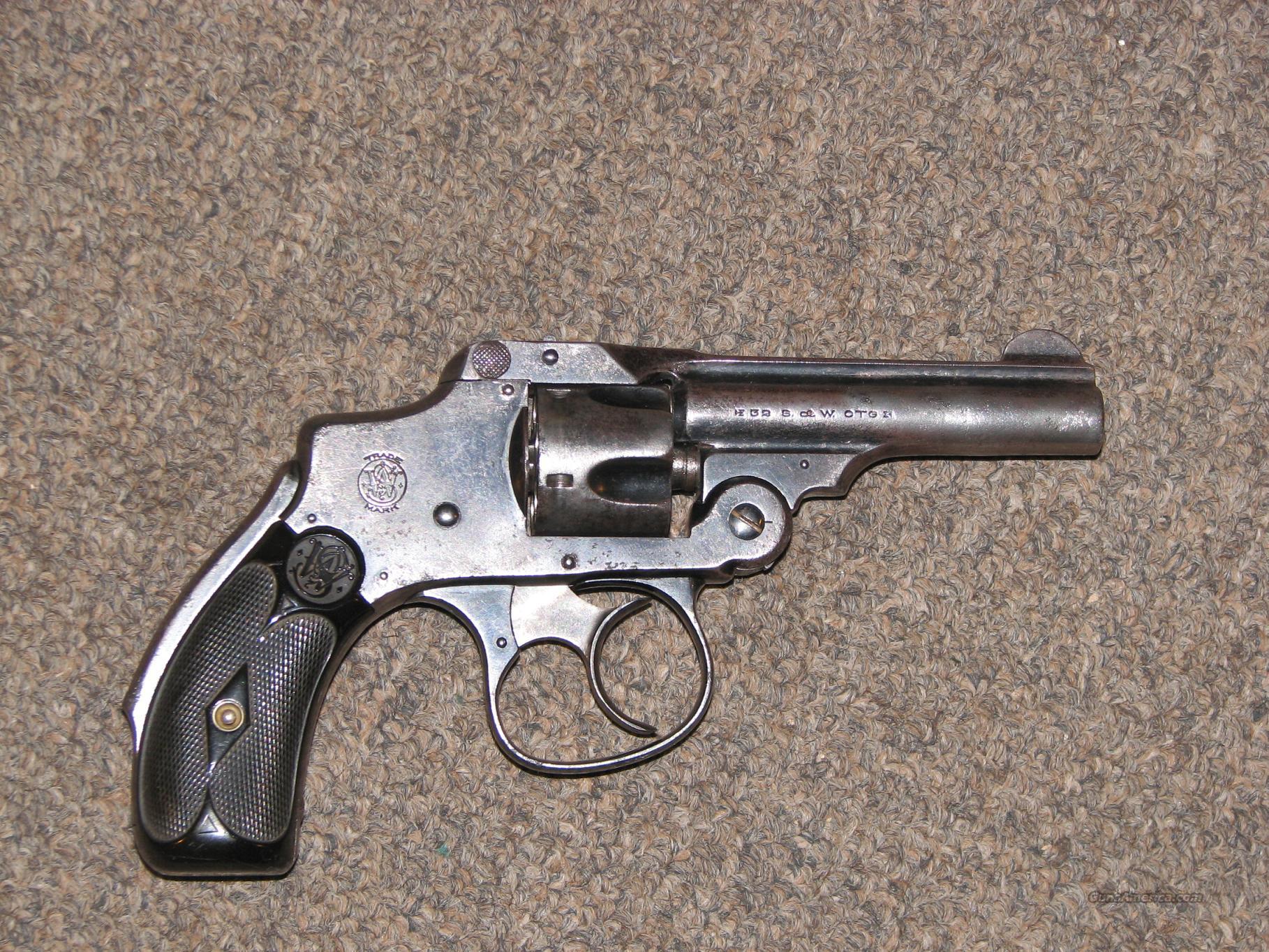Smith And Wesson 38 Safety Hammerless Serial Numbers
I have a S&W.38 Safety Hammerless that. 5-round cylinder: Sights: Fixed: The Smith & Wesson Safety Hammerless. Smith & wesson safety hammerless serial numbers. The Safety Hammerless, which debuted in 1887, was the world's first double action concealed hammer revolver. 1899.38 Military. The guns, which were basically an updated version of the.38 Military & Police revolver, were eventually given a V prefix on their serial number and called Victory Models. By the war's end,.
Antique Arms, Inc. - Smith and Wesson 38 Safety Hammerless Revolver in Original Box Smith and Wesson 38 Safety Hammerless Revolver in Original Box This is a nice 3rd Model S&W safety hammerless DA revolver with desirable blued finish in its original factory box. It has a 5' barrel which is fairly uncommon for a hammerless gun as these were made to be carried as pocket guns. Third models were produced from 1890 to 1898.


Serial number is in the 102,000 range. All are antique under approx. Shortly after their successful introduction of their double action top-break revolver design in 1880, Smith and Wesson began development of a new gun that was purely double action with no exposed hammer. The model was known by three different names. Internally, Smith and Wesson called this design its 'Safety Hammerless' model. However, as a show that this gun was something new and different for S&W, it was marketed to the public as the 'New Departure' model.
Note the end label on the factory box calls this a 'New Departure'. Finally, the third name this gun went by was a nickname dubbed by the American public which referred to it as a 'lemon squeezer.' Any one of those three names applies. There is an interesting bit of a story about the development of this gun in Roy Jinks' book called History of Smith and Wesson. On page 135 Jinks writes: Legend has it that D. Dns Server Configuration In Rhel6 Step By Step Pdf here. B. Wesson (founder Daniel Wesson) developed the Safety Hammerless model in a night-long session after hearing that a child had accidentally been hurt by cocking and pulling the trigger on one of the Smith & Wesson Double Action Revolvers.
This legend cannot be substantiated, since factory records show a methodical development of the revolver. Wesson was a sensitive person and perhaps after hearing of this accident was inspired to work very closely with his son Joe to develop a revolver with a safety on the handle and a strong trigger that would require a long pull, making it impractical for a child to pull through and fire.this style of revolver also stems from the law enforcement officer's requirement to draw his revolver from his coat pocket without the exterior hammer catching in the pocket lining. Joe Wesson's first drawing of the new hammerless design was completed in 1882 but needed further revisions. It wasn't until four years later in 1886 that the Safety Hammerless was introduced to the marketplace. Contrary to first impressions, the hammerless model isn't just a DA with an ugly shroud over the hammer; it's actually designed to be faster and safer than the standard DA. Its main improvement is that it has a safety bar on the backstrap which must be fully depressed to release the hammer. Also, the latch design on the first three variations are different than standard DA's.probably to reduce chances of the latch from being released while being drawn from the owner's coat or pocket.
Internally, the firing pin is separate from the hammer. Resting behind the recoil shield, it's a spring-loaded 'inertia type' that requires a sufficient blow from the hammer to make contact with the cartridge in cylinder chamber. Since it does not rest statically against the back of the cartridges in the cylinder, it's less likely to discharge accidentally if dropped fully loaded. Another advantage of the hammerless model in addition to the reduction of snagging.the shroud protected the action from dirt and debris that could jam the weapon.